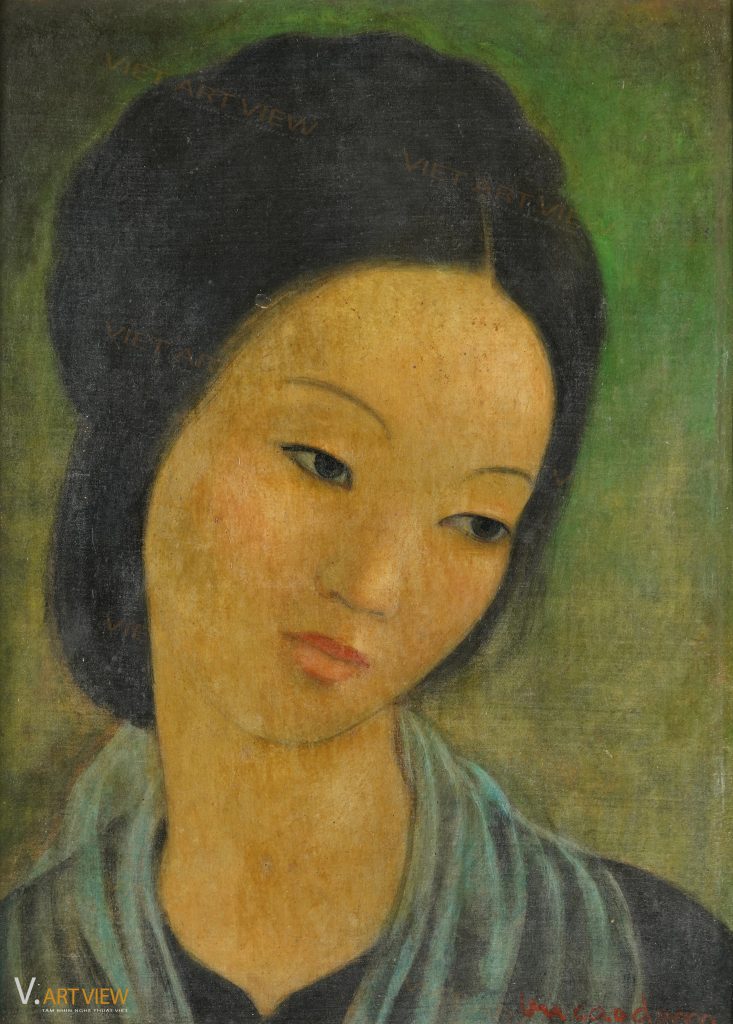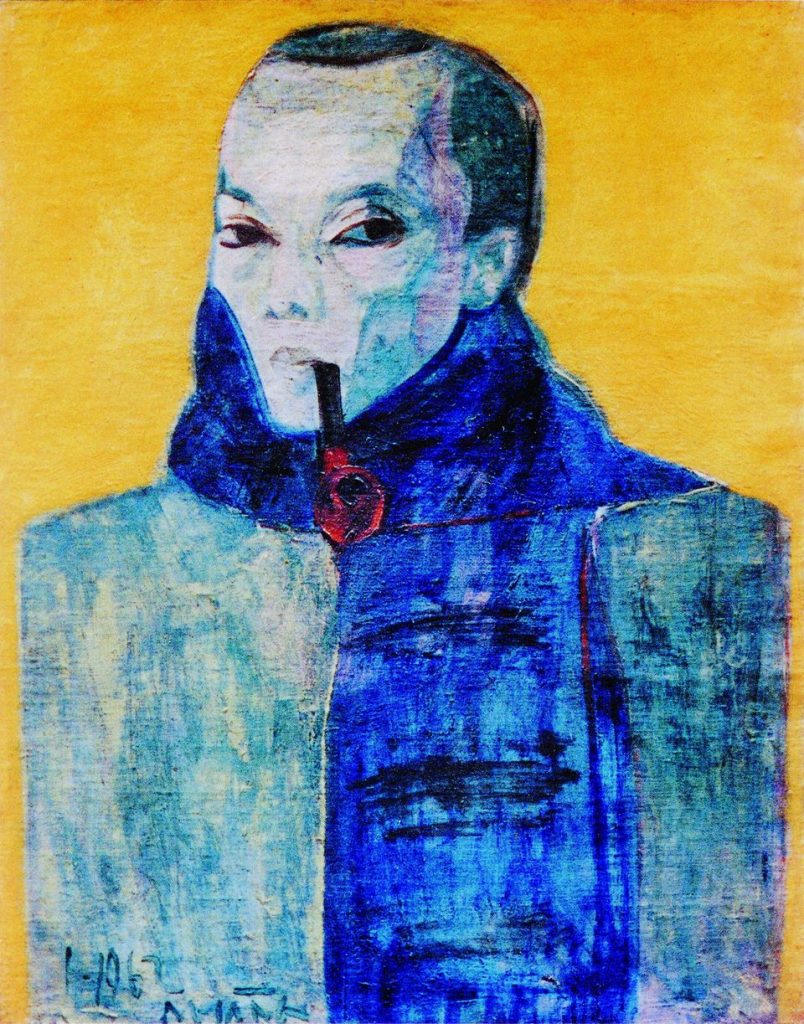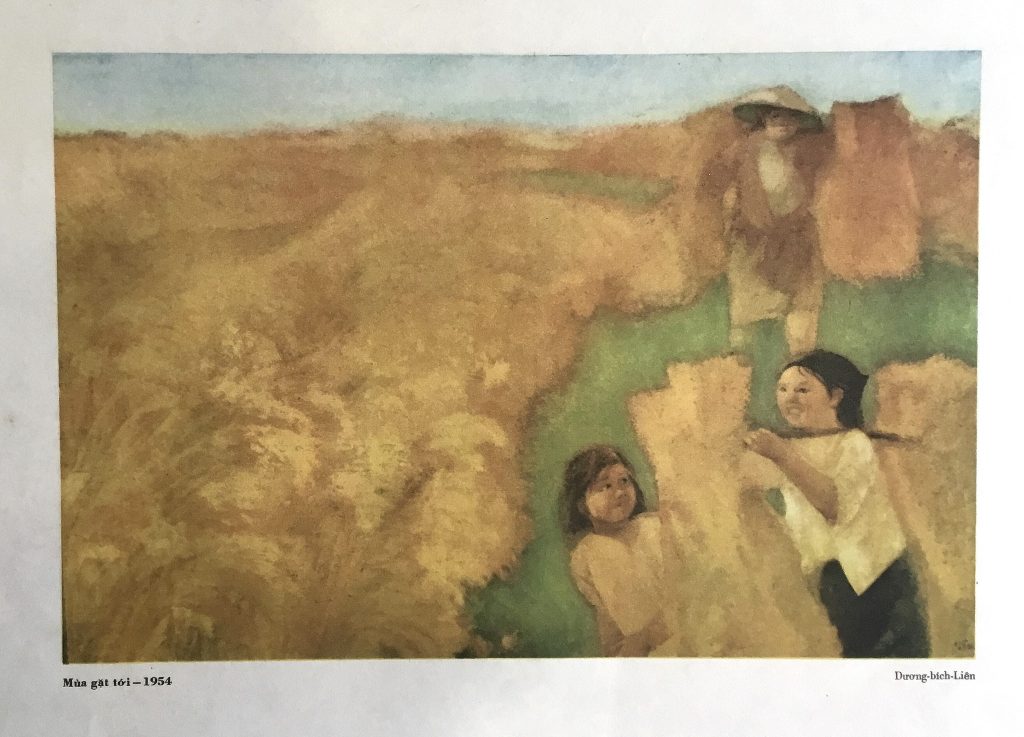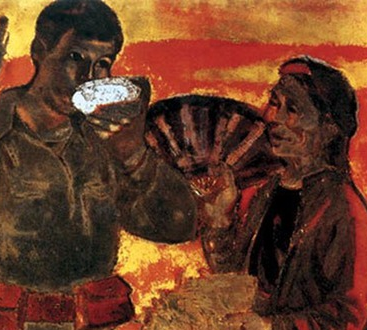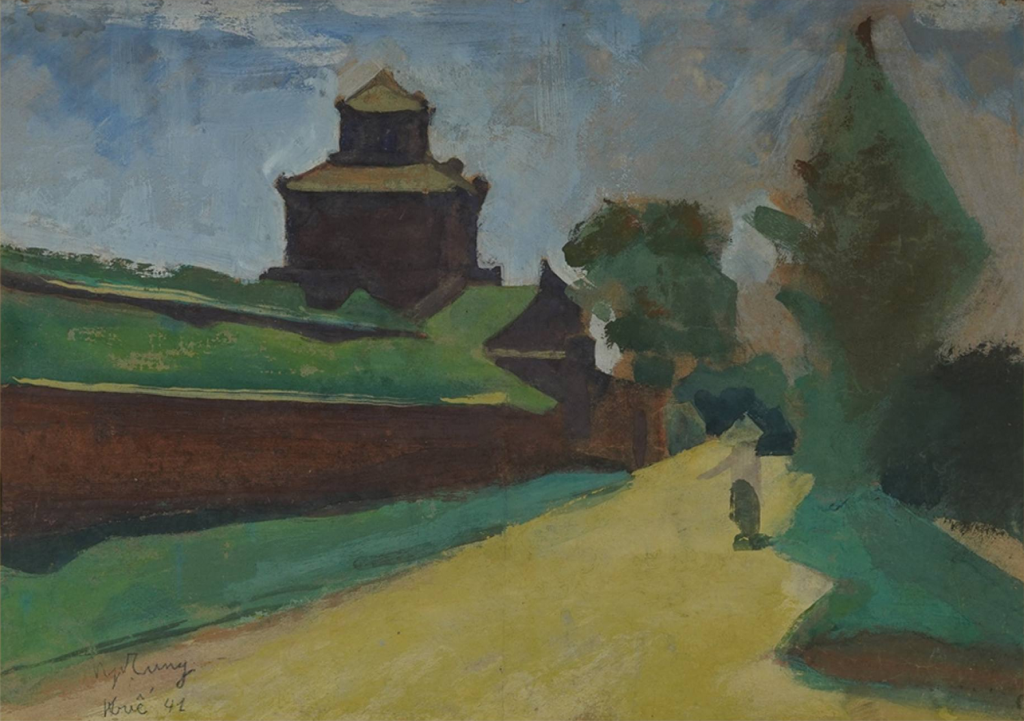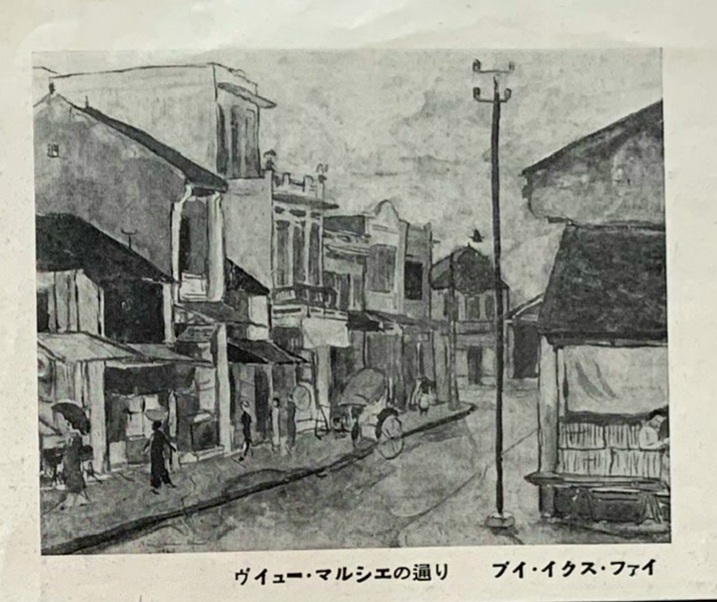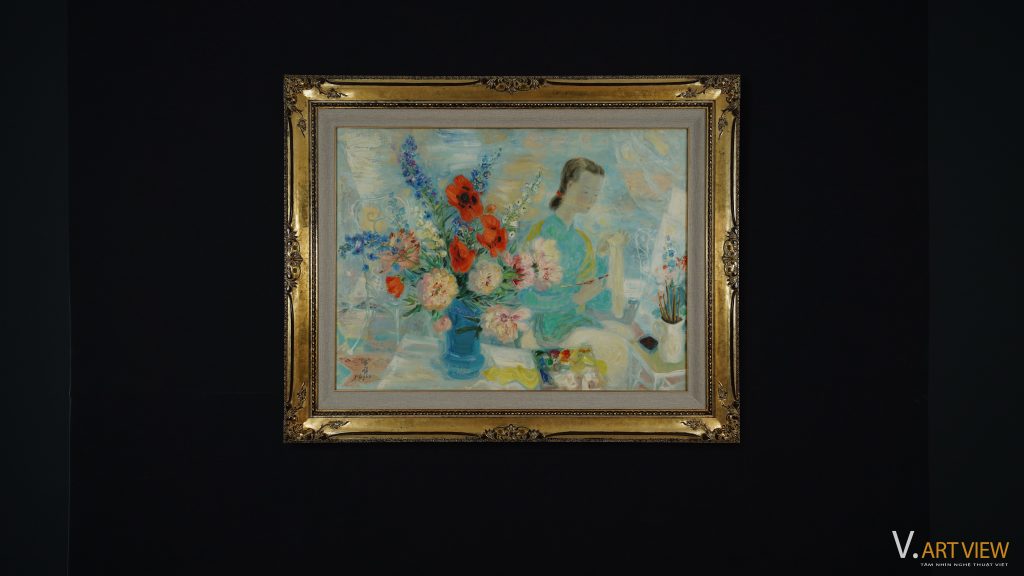
Lê Phổ (1907-2001). Woman painter. 1965. Oil. 100×130cm
Going back in time…
Lê Phổ was born in 1907 in Hà Đông. His father was Lê Hoan, a mandarin of Annam (Hà Tây province) during the reign of King Hàm Nghi (1884-1885). Lê Phổ became an orphan at the age of eight after her parents died one by one. Because of the lack of parental love, for Lê Phổ, “the years that were extremely beautiful” of his was when studying at Indochina Fine Arts College. Lê Phổ loved his teacher – Mr. Victor Tardieu – so much, as well as his second teacher – Joseph Inguimberty.
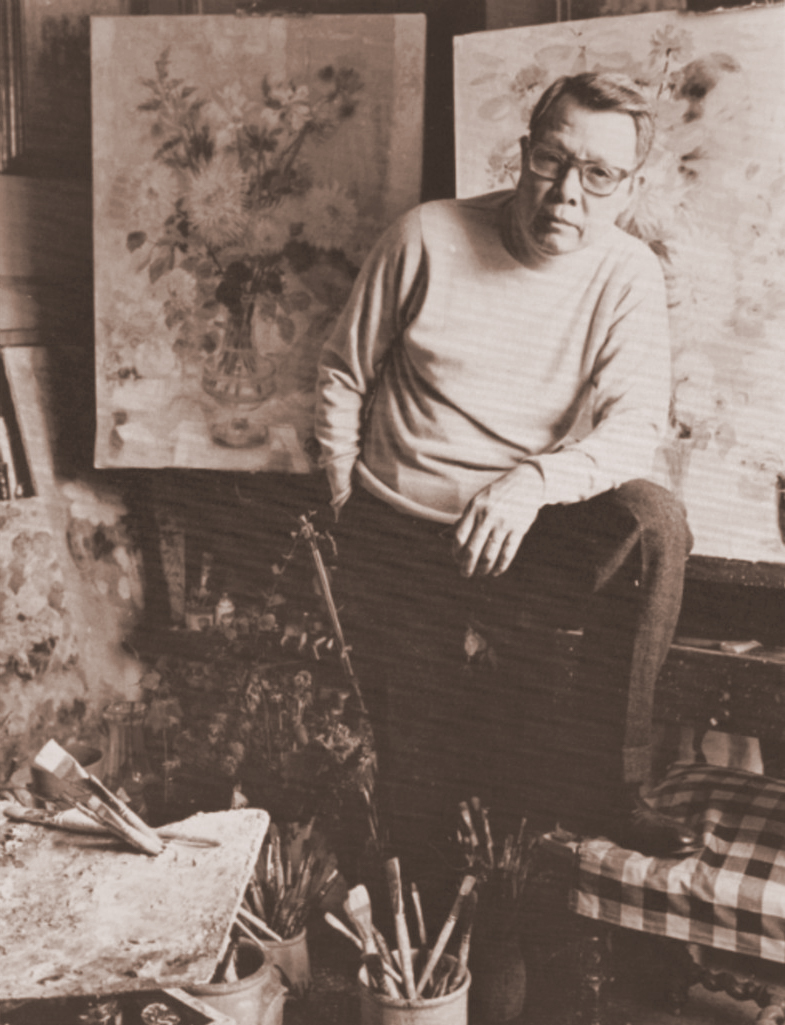
Lê Phổ in his studio, about 1960. Source: Findlay Galleries
In 1931, Lê Phổ was chosen by professor Victor Tardieu as an assistant at the Exhibition of Colonial Countries in Paris in 1931. This was the first time the young Lê Phổ went abroad. In 1933, he returned to Vietnam to work as a teacher. During that time he had the opportunity to go to Huế, to paint portraits of King Bảo Đại and Queen Nam Phương…
After four years in Vietnam, as the Art Director of the Indochina display sector at the 1937 Paris International Exhibition, Lê Phổ returned from Vietnam to France and decided to stay in Paris; considered this place as the second homeland.
Painting by Lê Phổ – A place of harmony between Eastern and Western art
Basically, Lê Phổ’s painting belongs to the romantic school, divided into three stages. The first period was around Lê Phổ’s time in Hanoi, and a few years after he was in France. Materials of lacquer, silk, oil were fully experienced by him. Basic, classical, realistic, academic painting styles…
The second period is called the Romanet period. The painting style of this period was very deep, cultivated, continuously introduced to the public by the special relationship of work and friendship between Mr. André Romanet – owners of Galerie de Romanet and Lê Phổ. This lasted for 23 years…, from 1941 to 1964. Silk paintings of Lê Phổ in this period had many achievements. Lê Phổ shaped Vietnamese women with traditional clothes; boldly Vietnamese decorative details, took the deep inspire from the images, customs and habits of his homeland… in a setting that is full of romance, modest style, grace, politeness that very civilized European with original, rich colors.
Lê Phổ’s third period (last period) began when he signed an exclusive contract with Wally Findlay Galleries of the United States in 1964. Since this time, he almost painted in oil only. This is the period of the strongest harmony between East and West in Lê Phổ’s painting. Shaping of Vietnamese women was always present, but the style, manner, and color in paintings are bearing strong influences of European Impressionism – Post Impressionism.
This strong and profound harmony has created a great attraction of Lê Phổ’s paintings. With silk paintings, he was delicate, meticulous; in oil paintings, he made it spacious, vivid, brilliant and regal… all of those exude the modesty, refinement, elegance, grace and nobility of Vietnamese women.
A predestined opportunity with áo dài
According to some documents, around 1950, Lê Phổ combined the four-part dress and a variation of Le Mur’s áo dài by artist Cát Tường (1912-1946), creating a new style of áo dài with long sewn lap, unpuffed sleeves, closed neck with buttons, buttons are on the right side of the dress, sewn close to the body, while the two laps are free to fly, very soft and graceful.
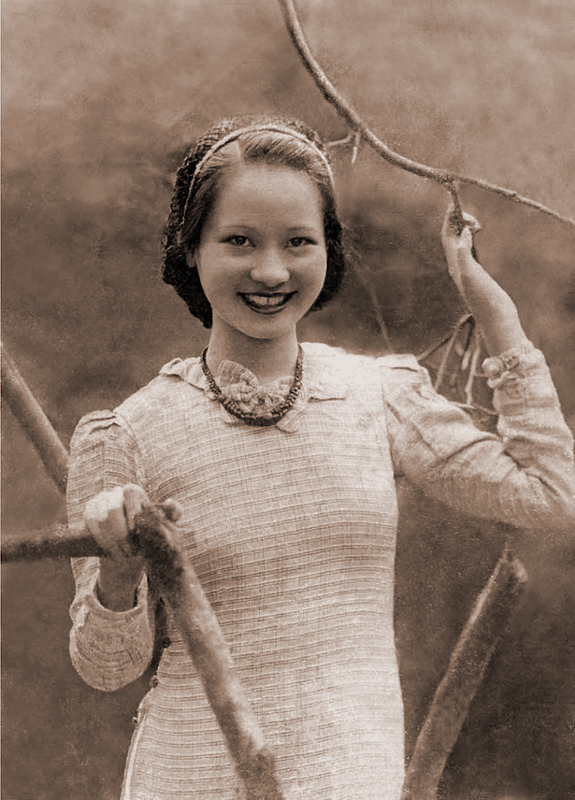
Lemur’s Áo dài in 1938. Source of the image: hoilhpn.org.vn
This combination has created a harmonious áo dài, which is evaluated as a standard in shape design, was enthusiastically welcomed by women and often affectionately called as “áo dài Lê Phổ”.
The quartet of Vietnamese painters living in Europe often took the shape of women with áo dài as the focal point in their compositions. But the combination of shaping women wearing Vietnamese áo dài in scenes, lively scenes with European nuances and the Impressionist style is the special highlight that makes Lê Phổ’s paintings different.
Image of woman painter or image of Vietnamese women
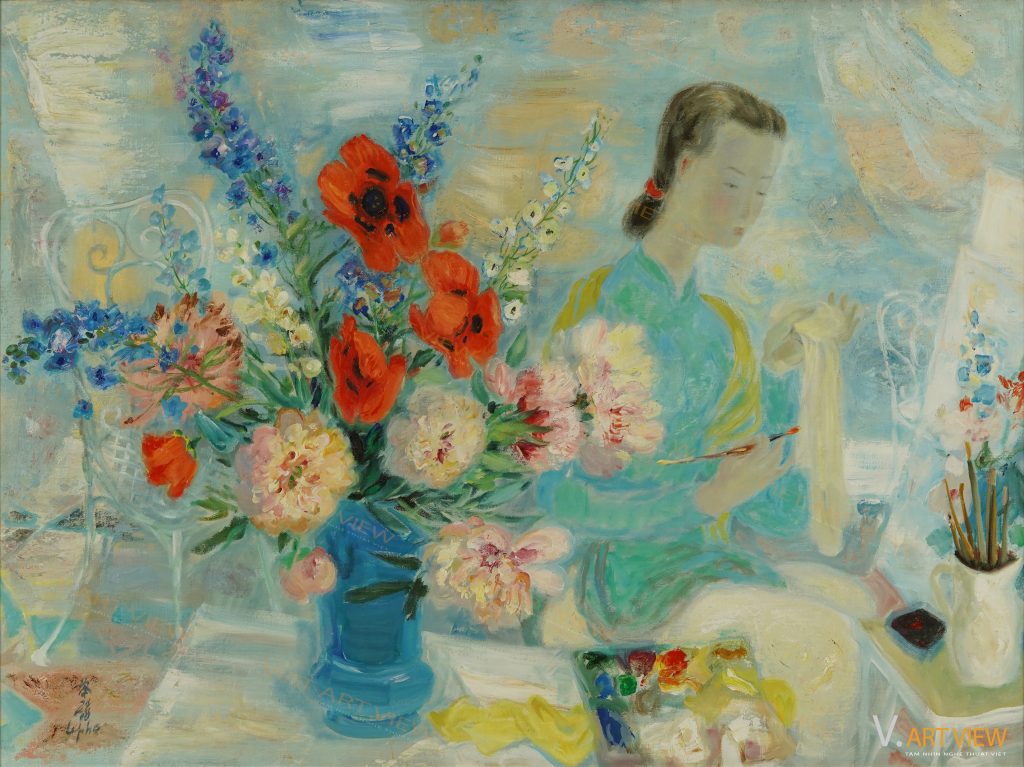
Lê Phổ (1907-2001). Woman painter. 1965. Oil. 100×130cm
The painting depicts a woman artist sitting in front of an easel with brushes and colors. But the main subject, occupying almost the entire surface of the painting, is still a colorful and impressive vase of flowers.
‘Woman painter’ was created in 1965. This is the period when Lê Phổ’s painting language is most recognizable. Shaping of flowers, gardens, characters mostly in oil with vibrant colors of Impressionism. In which, the flower shaping is always in the center and largest position.
The image of woman characters, whether single or group, is also very elegant and leisurely, such as enjoying afternoon tea, reading books, talking, embroidering, playing with children or just thinking.
Possibly because Lê Phổ wanted his character to be diverse; so these women characters no matter what activity they are being portrayed in, the charisma still exudes a royal and noble lifestyle.
The special values of the work…
According to the sharing from Art Collector Nguyễn Minh, during an outing in Chicago (USA) with his daughter, they visited Hindman Auction House. Here, he met ‘Woman painter’ of Lê Phổ and was immediately interested in this painting.
Firstly, this may be the first time that a painting of a woman painter by Lê Phổ appeared.
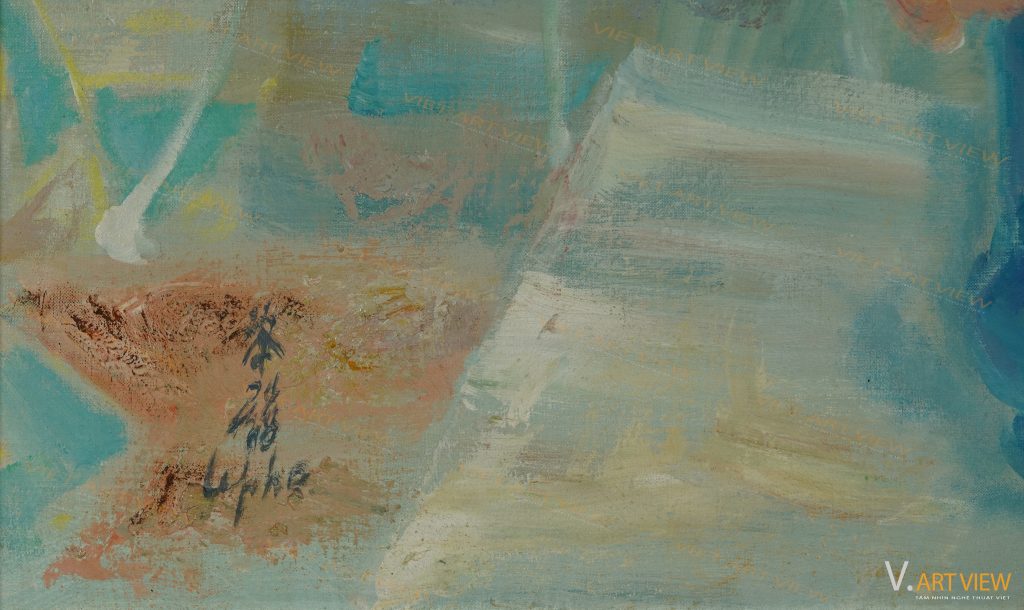
Second, when Lê Phổ went to school, there were only woman painter Lê Thị Lựu and woman sculptor Nguyễn Thị Kim. Ms. Lựu is a figure in the quartet of famous Vietnamese painters living abroad, she was very close to Lê Phổ. So is the woman painter in the painting is Lê Thị Lựu?
Third, also the most important thing, this is a very beautiful painting, boldly blending Eastern and Western elements.
The main character is the image of a Vietnamese woman in traditional áo dài outfit, but the background is a civilized Europe; was composed on the style, visual language, and colour scheme with the breath of Impressionism…
And the large, rare size of 98×131 cm of ‘Woman painter” also contributes to make the painting very valuable.
On the occasion of International Women’s Day 8.3, Viet Art View chooses ‘Woman painter’ by famous artist Lê Phổ as a gift to introduce with art-loving friends to honor the elegance, grace, and modesty of the image of Vietnamese women, in a civilized, modern, aristocratic European setting…
Written by Viet Art View
Copyrights belong to Viet Art View


